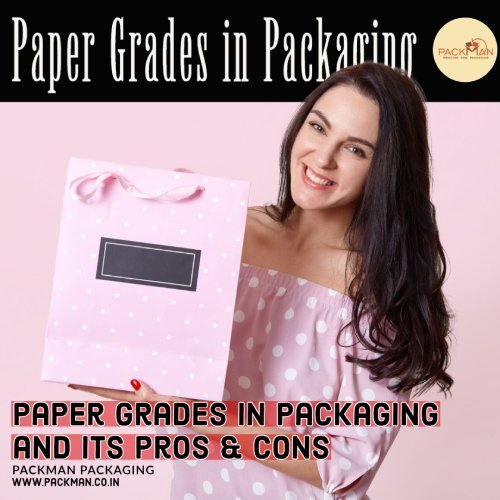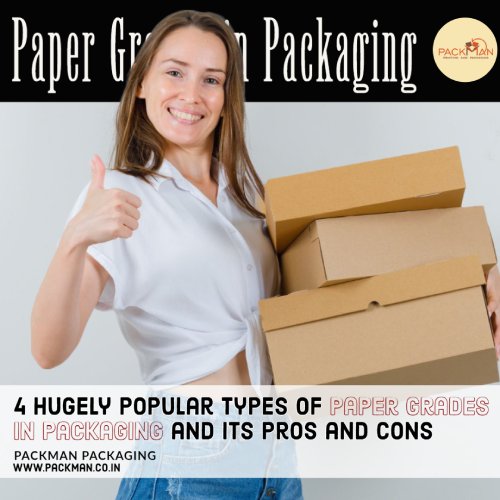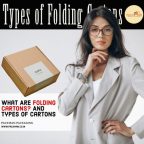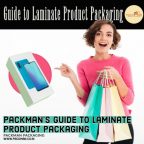In the world of packaging, where visual appeal meets functional durability, paper grades play a pivotal role in delivering a delightful and secure product experience. These grades are crucial as they determine the strength, durability, and suitability of paper for different packaging applications.
Paper grades refer to the various classifications and qualities of paper used in packaging. Earlier Packman Packaging explained about Four Popular Kinds of Paper Grade for Packaging. Now in this article here Packman Packaging India’s top manufacturer of paper bags and corrugated boxes examines the pros and cons of the four most widely used paper grades in the packaging industry today. So that you could decide which paper grade to opt for according to your product.
1. Clay Coated News Backboard (CCNB)
Clay Coated News Backboard (CCNB), is a type of coated paperboard made from recycled newsprint, mixed secondary paper, and old corrugated containers.
Uses: It is often used for making cosmetic boxes, pharmaceutical packaging, and high-end food boxes.
Pros
- Its high-quality printing surface and excellent printability makes it ideal for packaging applications that require high-quality graphics and vibrant colors.
- It is a cost-effective packaging option for products like laundry detergent, pet food, or dry food.
- It is an eco-friendly option for businesses.
Cons
- Due to its moisture-absorbing tendency, it is unsuitable for items that need enhanced resistance to water or greater load-bearing capabilities.
- The clay coating is difficult to remove sometimes leading to contamination of other recycled materials.
2. Solid Bleached Sulfate Board (SBS)
Solid Bleached Sulfate Board (SBS) is a premium paper grade made from bleached chemical pulp which is then refined and formed into boxes.
Uses: It is commonly used for luxury packaging, cosmetics, pharmaceuticals, and high-end consumer products.
Pros
- SBS offers excellent stiffness and a smooth surface that enhances the visual impact of the packaging. Its durability makes it an ideal choice for specialties like die-cutting.
- Its exceptional whiteness and superior printability make it a perfect paper grade for printing labels and product branding.
- SBS can be applied on one or both surfaces, giving businesses options for packaging design and printing.
- SBS also permits special techniques like embossing, debossing, hot foil stamping, or spot UV printing.
Cons
- SBS lacks environmental friendliness due to the substantial bleaching process that releases harmful chemicals.
- SBS is commonly produced from virgin fibers, requiring tree felling thereby causing deforestation, a critical ecological concern.
- It is costlier than other paperboard grades.
- It has poor water resistance.
3. Folding Box Board (FBB)
A folding Box Board (FBB) is a sturdy paperboard composed of multiple layers of chemical and mechanical pulp.
Uses: Packaging consumer goods such as electronics, toys, cosmetics, foods, and pharmaceuticals.
Pros
- FBB’s strength and rigidity make it perfect for durable packaging.
- Its folding properties make it ideal for cartons that need to be easily assembled and stored.
- Multi-ply FBB’s smooth surface enables high-quality offset printing opportunities.
Cons
- It is costlier than CCNB owing to its superior quality of production process and use of virgin fibers.
- Difficult to recycle due to its multi-layered composition
4. Natural Kraft or Coated Unbleached Kraft (SUS/CUK)
Natural Kraft or Coated Unbleached Kraft (SUS/CUK), is made entirely of recycled materials such as unbleached wood pulp.
Uses: Packaging of organic foods, natural beauty products, and eco-friendly household products.
Pros
- Its natural brown color adds to its aesthetic appeal.
- Coated Unbleached Kraft (CUK) has a layer of clay coating for improved printability. This coating is also water resistant which makes it an ideal choice for packaging products exposed to moisture.
- They are eco-friendly.
Cons
- These paperboard grades may not work for embossing, debossing, or foil stamping due to their natural and textured appearance.
- Not as strong as SBS or FBB.
From protecting delicate goods to captivating consumers on retail shelves, the right paper grade can make all the difference. So, make the right choice for your company.
Now that you know the possible pros and cons of each paper grade, we hope it will help you to decide which paper grade will suit the best for your end product.





